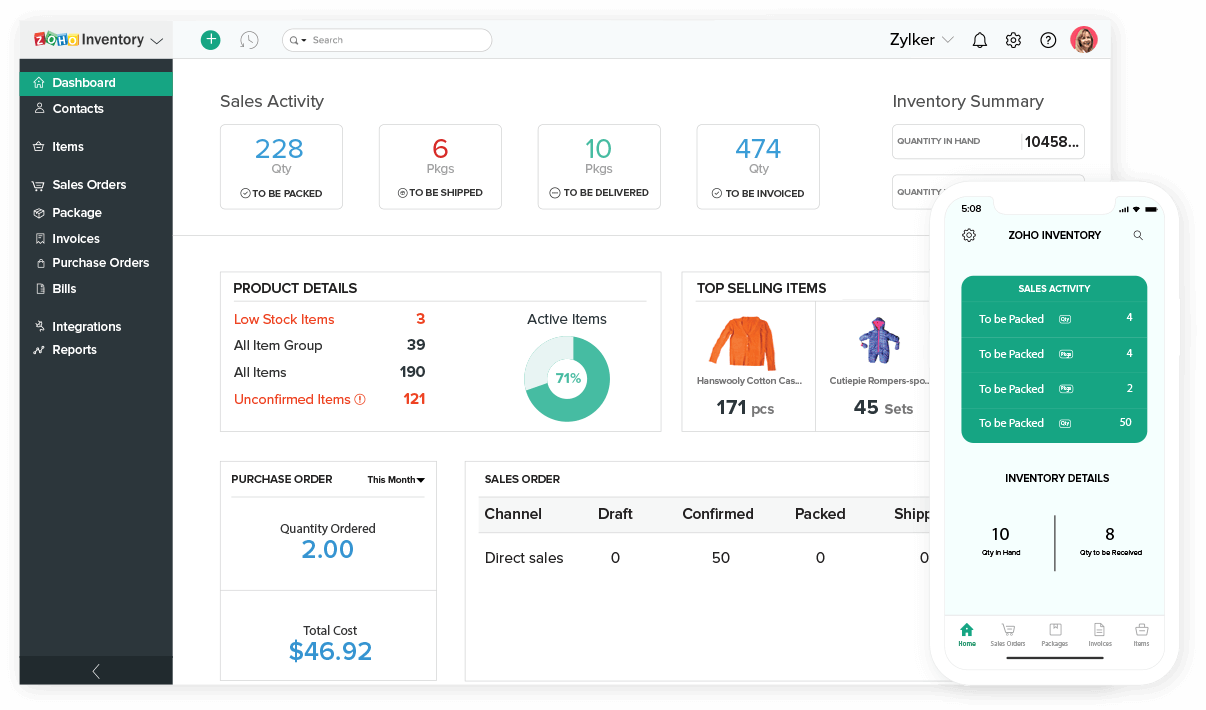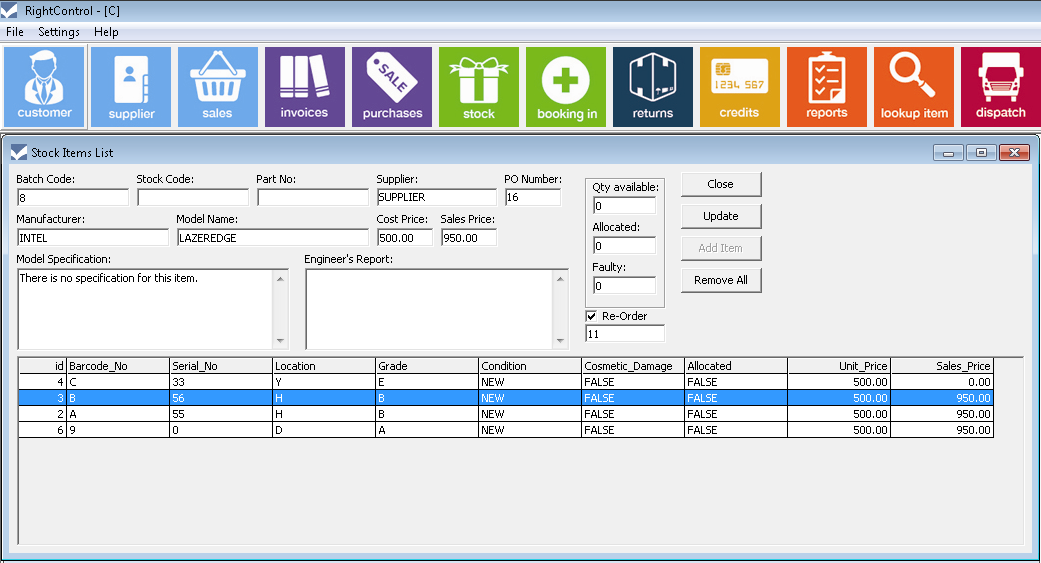Inventory tracking software for businesses has emerged as a game-changer in inventory management, providing businesses with unparalleled control and visibility over their stock. From retail to manufacturing, this innovative technology streamlines operations, reduces costs, and unlocks new opportunities for growth.
With real-time tracking, automated alerts, and comprehensive reporting capabilities, inventory tracking software empowers businesses to make informed decisions, optimize stock levels, and stay ahead of the competition.
Overview of Inventory Tracking Software
Inventory tracking software is a powerful tool that helps businesses manage their inventory efficiently. It provides real-time visibility into stock levels, allowing businesses to optimize their inventory management processes. This software can help businesses reduce costs, improve customer service, and increase profitability.Inventory tracking software is beneficial for businesses of all sizes, but it is particularly useful for businesses that have a large inventory or that experience frequent stockouts.
Some industries that can benefit from using inventory tracking software include:
- Retail
- Manufacturing
- Wholesale distribution
- Healthcare
- Food and beverage
Features and Capabilities of Inventory Tracking Software
Inventory tracking software empowers businesses with a comprehensive suite of features and capabilities to streamline inventory management and optimize stock levels.
These solutions provide real-time visibility into inventory levels, enabling businesses to make informed decisions about purchasing, storage, and distribution.
Key Features
- Real-time Tracking:Track inventory levels in real-time across multiple locations, ensuring accurate and up-to-date information.
- Stock Level Alerts:Receive notifications when stock levels reach predefined thresholds, preventing stockouts and ensuring timely replenishment.
- Reporting Capabilities:Generate customizable reports on inventory levels, stock movements, and other key metrics, providing valuable insights for decision-making.
- Barcode Scanning:Utilize barcode scanners to automate inventory updates, reducing errors and increasing efficiency.
- Integration with Other Systems:Integrate with accounting, ERP, and POS systems to streamline data sharing and automate processes.
- Mobile Accessibility:Access inventory data and perform tasks remotely through mobile devices, enhancing flexibility and convenience.
- Historical Data Analysis:Track inventory performance over time to identify trends, optimize stock levels, and improve forecasting accuracy.
- Demand Forecasting:Utilize historical data and predictive analytics to forecast future demand, ensuring optimal inventory levels and preventing overstocking or understocking.
- Inventory Optimization:Leverage algorithms to optimize inventory levels, minimizing carrying costs while maintaining desired service levels.
Benefits of Using Inventory Tracking Software

Inventory tracking software provides numerous advantages for businesses of all sizes. It streamlines inventory management processes, enhances efficiency, reduces costs, and increases profitability.
Improved Efficiency
Inventory tracking software automates many manual tasks, freeing up staff for more strategic initiatives. It provides real-time visibility into inventory levels, enabling businesses to make informed decisions about purchasing, stocking, and distribution.
- Reduces manual errors and data entry time.
- Provides instant access to inventory data.
- Optimizes stock levels, minimizing overstocking and stockouts.
Reduced Costs
By optimizing inventory levels, businesses can reduce storage costs, prevent spoilage, and minimize waste. Inventory tracking software also helps identify slow-moving items, allowing businesses to adjust their purchasing strategies and negotiate better prices with suppliers.
- Lower storage and handling expenses.
- Reduced inventory carrying costs.
- Improved supplier relationships and cost negotiations.
Increased Profits
Inventory tracking software helps businesses maximize sales opportunities by ensuring optimal stock levels. It prevents lost sales due to stockouts and helps businesses identify high-demand items, allowing them to adjust their production or purchasing strategies accordingly.
- Increased sales revenue through optimal stock levels.
- Reduced lost sales due to stockouts.
- Improved customer satisfaction and loyalty.
Implementation and Integration of Inventory Tracking Software: Inventory Tracking Software For Businesses

Implementing and integrating inventory tracking software into a business involves several steps to ensure a smooth transition and effective utilization.
Initially, it’s crucial to assess the business’s current inventory management processes, identify areas for improvement, and define the specific requirements for the new software. This assessment should involve stakeholders from various departments, such as purchasing, warehousing, and sales, to gather comprehensive insights.
Planning and Preparation
Once the requirements are established, a detailed implementation plan should be developed, outlining the timeline, responsibilities, and communication channels. This plan should include steps for data migration, user training, and system testing to ensure a seamless transition.
Data Migration and Configuration, Inventory tracking software for businesses
Migrating existing inventory data into the new software is a critical step. It’s essential to ensure data accuracy and completeness by verifying and cleansing the data before import. The software should be configured according to the business’s specific needs, including setting up custom fields, defining inventory locations, and establishing reorder points.
User Training and Adoption
Thorough user training is vital for successful software adoption. Training should cover all aspects of the software, from basic navigation to advanced features. It’s recommended to provide hands-on training and documentation to ensure users are comfortable and proficient in using the system.
Integration with Other Systems
For businesses with multiple systems, such as ERP or accounting software, integration is crucial to streamline data flow and eliminate manual processes. The inventory tracking software should be integrated with these systems to ensure real-time updates and data consistency across the organization.
Ongoing Monitoring and Maintenance
Once the software is implemented, ongoing monitoring and maintenance are essential to ensure optimal performance. Regular system updates, data backups, and performance reviews should be conducted to identify and address any issues promptly. User feedback should also be gathered to identify areas for improvement and enhance the overall effectiveness of the software.
Considerations for Choosing Inventory Tracking Software
When selecting inventory tracking software for your business, it is crucial to consider several key factors to ensure you choose the solution that best meets your specific needs and requirements. These factors include:
- Business size and industry:The size and industry of your business will determine the complexity of your inventory management needs. Consider the number of SKUs you manage, the volume of transactions, and any industry-specific requirements.
- Inventory management needs:Identify the specific inventory management tasks you need the software to handle, such as tracking stock levels, managing multiple warehouses, or handling complex inventory costing methods.
- Integration with other systems:Consider how the inventory tracking software will integrate with your existing business systems, such as your accounting software, ERP system, or e-commerce platform.
- Scalability:As your business grows, you will need inventory tracking software that can scale to meet your increasing demands. Consider the software’s ability to handle larger volumes of data and transactions.
- Cost:Determine the budget you have available for inventory tracking software and consider the pricing models of different solutions, including upfront costs, subscription fees, and ongoing support costs.
- Vendor reputation and support:Research the reputation of different software vendors and read reviews from other businesses. Consider the level of support and training provided by the vendor.
By carefully evaluating these factors, you can make an informed decision and select the inventory tracking software that is the best fit for your business.
Case Studies and Success Stories

Numerous businesses have experienced significant improvements in their inventory management processes after implementing inventory tracking software. Here are a few notable case studies and success stories:
One notable example is a manufacturing company that faced challenges in tracking inventory levels across multiple warehouses. After implementing an inventory tracking solution, the company gained real-time visibility into its inventory, leading to a reduction in stockouts and improved production planning.
Improved Inventory Accuracy
A retail chain implemented an inventory tracking system to address discrepancies in inventory counts. The software automated inventory updates, eliminated manual errors, and provided accurate stock levels. This resulted in increased customer satisfaction and reduced losses due to incorrect inventory counts.
Enhanced Warehouse Efficiency
A distribution center faced inefficiencies in order fulfillment due to manual inventory tracking. By implementing an inventory tracking system, the center gained real-time visibility into inventory locations, streamlined picking and packing processes, and improved overall warehouse efficiency.
Final Thoughts
In conclusion, inventory tracking software for businesses is an indispensable tool that transforms inventory management, enabling businesses to operate more efficiently, reduce costs, and maximize profits. By embracing this technology, businesses can gain a competitive edge, enhance customer satisfaction, and pave the way for future growth.
User Queries
What are the key benefits of using inventory tracking software for businesses?
Inventory tracking software offers numerous benefits, including real-time inventory visibility, reduced stockouts, improved efficiency, cost savings, and increased profitability.
How does inventory tracking software help businesses improve efficiency?
By automating inventory tracking and providing real-time updates, inventory tracking software eliminates manual processes, reduces errors, and streamlines operations, leading to improved efficiency and productivity.
What industries can benefit from using inventory tracking software?
Inventory tracking software is beneficial for a wide range of industries, including retail, manufacturing, healthcare, food and beverage, and distribution.